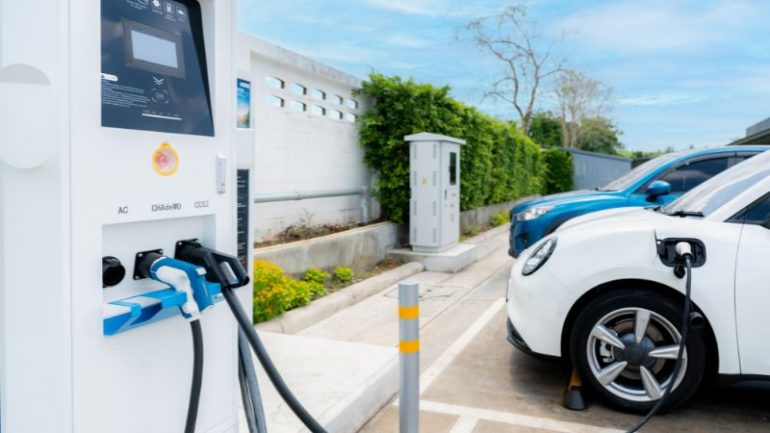The electric vehicle (EV) revolution is accelerating at a pace faster than many had anticipated. In 2023, global EV adoption is soaring, with millions of new EVs hitting the roads. However, as EV sales surge, a critical question looms: Can the charging infrastructure keep up with this demand?
The Current State of EV Charging Infrastructure
Globally, investments in EV charging infrastructure have been increasing steadily. As of 2023, key markets such as China, Europe, and North America have made significant progress in deploying public and private charging stations. Major initiatives include:
- China: Leading the charge with over 5 million public charging points, thanks to aggressive government policies and private sector collaboration.
- Europe: A well-connected charging network across countries, supported by stringent emission regulations and subsidies.
- United States: The Biden administration’s bipartisan infrastructure law aims to build a network of 500,000 EV chargers by 2030.
Despite these efforts, the infrastructure growth often lags behind the burgeoning EV population, especially in regions with nascent EV markets or high concentrations of EVs.
Key Challenges Facing EV Charging Infrastructure
- Demand-Supply Imbalance
- The exponential growth in EV sales is outpacing the rollout of charging stations. In densely populated urban areas, finding an available charger is becoming increasingly difficult.
- Uneven Distribution
- Charging infrastructure is concentrated in urban centers, leaving rural and suburban areas underserved. This disparity limits the practicality of EVs for long-distance travel and in less populated regions.
- High Installation Costs
- Setting up fast-charging stations is capital-intensive, with costs ranging from $50,000 to $200,000 per station. This makes it challenging for smaller players to enter the market.
- Grid Strain
- The rapid increase in EV charging places additional demand on local electricity grids, particularly during peak hours. Regions with weak or outdated grids face the risk of outages and instability.
- Lack of Standardization
- Different charging standards, such as CHAdeMO, CCS, and Tesla’s proprietary network, create fragmentation, causing confusion and limiting interoperability.
Opportunities to Scale EV Charging Infrastructure
While the challenges are significant, the opportunities to develop a robust EV charging ecosystem are equally promising.
- Government Support
- Policies such as tax incentives, subsidies for charging station deployment, and mandates for charging stations in new buildings can accelerate infrastructure growth.
- Private Sector Involvement
- Companies like Tesla, ChargePoint, and Shell Recharge are investing heavily in expanding their networks. Partnerships between automakers, energy providers, and tech companies are fostering innovation and scaling infrastructure.
- Technological Innovation
- Ultra-fast Chargers: Reducing charging times to under 15 minutes for a full charge.
- Wireless Charging: Offering convenient, cable-free solutions for EV owners.
- Battery Swapping: Providing an alternative to charging, particularly in densely populated areas.
- Grid Modernization
- Integrating renewable energy sources, implementing smart grid technologies, and developing vehicle-to-grid (V2G) systems can mitigate grid strain and promote sustainable energy use.
- Focus on Emerging Markets
- Developing countries present untapped potential for EV charging infrastructure. With the right investments, these regions could leapfrog to clean mobility solutions.
The Role of Public-Private Partnerships
Collaboration between governments and private entities is crucial to meeting the infrastructure demands. Governments can provide financial and regulatory support, while private players bring innovation and efficiency. Successful examples include:
- Europe: The European Union’s Alternative Fuels Infrastructure Directive (AFID) has led to coordinated efforts across member states to expand charging networks.
- United States: The National Electric Vehicle Infrastructure (NEVI) program offers $5 billion in funding to states for EV charger deployment.
The Path Forward
To ensure that EV charging infrastructure keeps up with demand, a strategic and scalable approach is essential:
- Decentralized Charging Solutions: Promote home and workplace charging to reduce pressure on public stations.
- Integrated Planning: Align EV adoption targets with infrastructure rollout timelines.
- Renewable Energy Integration: Build solar- and wind-powered charging stations to make EVs truly sustainable.
- Consumer Education: Increase awareness about charging station locations and usage to alleviate range anxiety.
Conclusion
In 2023, the EV charging infrastructure faces both immense challenges and unparalleled opportunities. While the current pace of deployment may struggle to meet surging demand, ongoing innovation, government support, and collaborative efforts offer hope for a balanced ecosystem.
The race is on—not just to build charging stations but to ensure they are accessible, reliable, and sustainable. If tackled strategically, EV charging infrastructure can not only keep up with demand but also become a cornerstone of the global clean energy transition.
0




